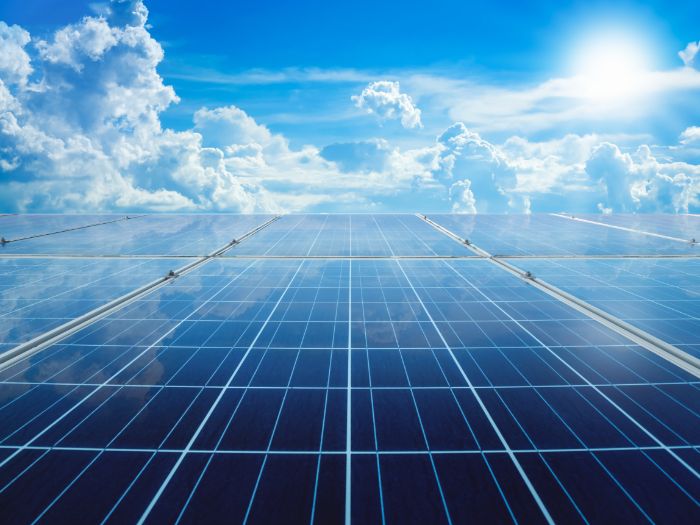Green hydrogen could generate GCC countries $200bn by 2050

GCC countries could generate up to $200bn in revenue and create 1 million jobs by 2050, according to a report issued by Dii Desert Energy and Roland Berger
GCC countries could generate up to $200bn in revenue and create one million jobs by 2050, according to a report issued by Dii Desert Energy and Roland Berger.
Under the report’s most aggressive scenario, GCC countries could generate revenues of $120bn-200bn by 2050 by producing and exporting green hydrogen and derivatives, such as green ammonia or clean fuels, to markets in Europe and Asia.
“The Potential for Green Hydrogen in the GCC Region” report identified a number of competitive advantages such as abundant solar and wind resources that the GCC can harness to become a key player in regional and global green hydrogen markets.
The report states that the International Energy Agency (IEA) has identified the GCC region as potentially one of the most competitive markets in the world for hydrogen production, with the long-term cost falling to $1.5-2 per kg. The GCC’s status as the cheapest region in the world for solar energy will put it a distinct advantage, with the cost of renewables accounting for 60 per cent of the total green hydrogen production cost.
The report also identifies significant funding availability, advanced export infrastructure and central location and local capabilities as advantages that the GCC can harness to emerge as a global leader in the production and export of clean hydrogen.
Projects
GCC countries have unveiled plans for a number of green hydrogen projects over the past 12 months. One of the largest is planned in Saudi Arabia’s ambitious $500bn NEOM development on the Red Sea Coast.
In July 2020, US-based Air Products and the local Acwa Power has signed a memorandum of understanding (MoU) to develop a $5bn hydrogen-based ammonia plant at the NEOM development. Thyssenkrupp is the hydrogen technology partner for the project.
The project will be powered by more than 4GW of renewable energy, and will be able to produce 1.2 million tonnes per year of ammonia. The plant will produce 650 tonnes of hydrogen daily, Air Products revealed in a statement released on 7July.
Air Products will be the offtaker for the produced green ammonia, and will invest a further $2bn in distribution. Production from the facility is due to begin in 2025.
According to the report, Neom has developed a comprehensive localisation approach and strategy which could have the potential to make it a first hydrogen valley in the Middle East and North Africa (Mena) region. As a core element of the above-mentioned green hydrogen project, the electrolyzers are envisioned to be assembled by thyssenkrupp locally with a focus on the cells. Considering the size of the project with approx. 2GW of electrolyzer capacity, the local manufacturing could serve as an incubator for Neom and other green hydrogen projects nationally and potentially internationally for electrolyzers and the broader value chain
In December 2020, Deme Group announced it was planning to develop a 250MW-500MW electrolyser project in Oman at Duqm port.
Duqm is set to become a major green hydrogen hub, with Acme Holdings planning to invest $2.5bn in a project to manufacture green ammonia and green hydrogen at the Duqm Industrial Zone.
Acme signed a memorandum of understanding (Mou) with the Oman Company for the Development of the Special Economic Zone at Duqm (Tatweer) in March 2021 to develop a facility with the capacity to produce up to 2,200 metric tonnes of green ammonia per day.
In May 2021, a consortium of Oman’s state-owned energy company OQ, Hong Kong-based green fuels developer Intercontinental Energy and Kuwait’s EnerTech revealed plans for a green hydrogen plant in Oman which will be powered by 25GW of renewable energy.
The consortium began undertaking a solar and wind monitoring study for the project in 2019, and has identified an area in the central Al-Wusta governorate that has significant solar radiation during the day and strong wind at night to enable the development of both solar and wind capacity for the green hydrogen scheme.
GCC’s first green hydrogen scheme
In May 2021, Germany’s Siemens Energy, in collaboration with state utility Dubai Electricity & Water Authority (Dewa) and Expo 2020, commissioned the first industrial scale solar-powered green hydrogen facility in the Middle East and North Africa (Mena) region.
The pilot project is located at Dewa’s outdoor testing facility of the Research and Development (R&D) Centre at the Mohammed bin Rashid (MBR) solar park in Dubai.
The facility contains electrolysis, storage and re-electrification capabilities. Daylight solar power from the MBR park will allow the plant to produce 20.5kg/hr of hydrogen at 1.25MW of peak power. Operational data from the green hydrogen electrolysis facility will be displayed at Expo 2020, which is due to start in October.
Energy & Utilities - Middle East and Africa Market Outlook Report 2024.
This must-have report for industry players offers a thorough understanding of the latest developments, challenges, and opportunities in the region, supported by data, analysis, and expert insights.


.png)
.png)

